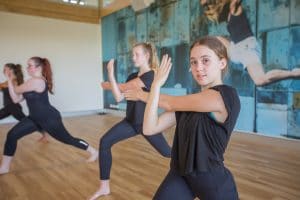Joint Hypermobility
by Abbey from O2 Active
What is it, and Who’s at Risk?
Being hypermobile is when your joints move in excess of their normal range of movement.
By repeatedly pushing past “normal” range, the joint gets micro traumas which can lead to a more serious injury, like joint dislocation, ligament strains/tears or tendon inflammation. The American Journal of Medicine (Kumar & Lenert, 2017) found that generalised joint hypermobility may be found in up to 20% of female youth but the condition seems to improve with age as muscles become stronger and tighter. Generalised joint hypermobility is seen quite often in athletes who perform sports which require a high level of flexibility like gymnasts, swimmers and dancers.

Why it needs to be addressed
Generalised Joint Hypermobility (GJH) can be associated with muscle and joint paint at night and during or after activity. Having hypermobile joints increases the likelihood of getting an injury, and when you do get injured it takes longer to repair. The ankle, knee and shoulder are the most commonly affect joints in children. Joint injuries are more likely in individuals who do not exercise, because the strength to support and protect joints adequately is reduced if muscles are not maintained.
The Role of Muscles for Stability
The use of exercise can help…so joints are better protected
Muscles are held together by myofascial, sheaths of connective tissue, which gives them a small amount of naturally occurring stiffness. In people with hypermobile joints, this sheath is more pliable than usual, meaning that the muscles have less inherent stiffness and are more easily stretched. The transfer of tension from the muscle to the bone in the joint is less efficient, so the muscles have to work harder to produce movement and provide stability. Via help from a professional, individuals are able to use exercise to better improve their balance, coordination, muscle strength and fitness so their joints are better protected.
Strengthening the Muscles and Reducing Reoccurrence
People with this condition are required to increase the muscle strength of the muscles surrounding the joint using resistance exercises, helping to decrease pain and prevent possibility of future injuries. Children with GJH often have problems with a range of everyday activities. Poor general fitness along with muscle weakness contribute to these difficulties especially if the child has a cautious nature and avoid tasks that require physical effort.
Whilst exercising it is important to maintain good posture throughout the movement and know your limits, avoiding extreme range of motions to ensure you don’t further damage the joint. Use of balance techniques and posture exercises also helps with joint symptoms. It is recommended to perform closed kinetic chain exercises, which increase muscle awareness and involve multiple joints. These could be exercises like squats, lunges, chin-ups and dips.
It is important to remember to always consult a healthcare professional before starting a strengthening regime to ensure proper technique and exercises are performed.

